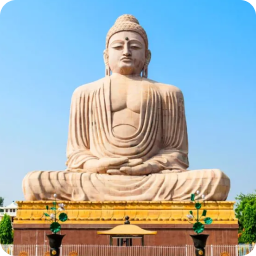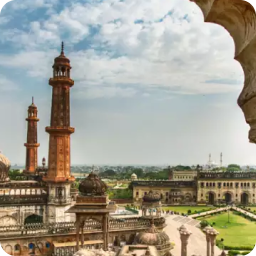Taxation in India: Systems, Evolution and Impact |
Taxation in India: A Tool for Governance and Income Redistribution
- Taxation is a term for when an authority, mostly a government, imposes an involuntary financial obligation on its citizens/ residents/corporations/companies etc.
- It is a way of Income Redistribution.
- Swaran Singh Committee recommended Duty to Pay taxes to be added in the Fundamental Duty–Article 51A. However, this was not included. So, Duty to Pay taxes is not a Fundamental Duty.
Taxation in India: Adam Smith’s Canons for Equity and Efficiency
| EQUALITY | ECONOMY | CERTAINITY | CONVENIENCE |
| Tax should be equal and proportionate to income. | Raising taxes while incurring least amount of expenses. | Dates, slabs, percentages should be definite and told in advance. | In terms of understanding the tax structure, computing, filing and paying of taxes. |
How does the Tax-to-GDP ratio influence Taxation in India’s Fiscal Health and Economic Resilience?
The size of a country’s tax resources in relation to its GDP.
| HIGH TAX TO GDP | LOW TAX TO GDP |
|
|
Taxation in India: Tax Incidence, Impact, Shifting and Base
| Tax Incidence |
|
| Tax Impact |
|
| Tax Shifting |
|
| Tax base |
|
Chronicles of Taxation in Independent India
| YEAR | COMMITEE | IMPACT |
| 1991-1993 | Chelliah Committee | The tax reforms began with Chelliah committee recommendations for reforming India’s tax system |
| 1986 | JHA Committee | VAT introduced. Recommended the transforming of Union excise duties into a modified value added tax (MODVAT) |
| 2002 | Vijay Kelkar Committee | Abolition of wealth tax. Abolish Minimum Alternative Task, |
| 2003 | Kelkar Task Force | Fiscal Responsibility and Budget Management
(FRBM) recommends GST |
| 2006 | launch of GST was announced from 2010 | |
| 2015 | Asim Das Committee | State Level VAT was introduced |
| 2014-16 | Introduces 122nd Constitutional Amendment Bill 2014 in
16th Lok Sabha. Ultimately, it was passed became 101st Constitutional Amendment Act, 2016 |
Essential Elements of Effective Taxation in India
- FAIRNESS– both in terms of Horizontal equity and Vertical equity. Individuals in identical or similar situations paying identical or similar taxes is known as horizontal equity. When people in higher tax brackets pay more taxes, it is known as vertical equity.
- EFFICIENCY- should be able to raise resources via taxes with least amount of difficulty to the taxpayers.
- SIMPLICITY– in terms of understanding the tax structure, computing, filing and paying of taxes. This will increase Tax compliance among the masses and in turn increase the revenue resource of the government.
- FLEXIBLE-should be able to change according to the needs of the time.
- TRANSPARENT– The individual assessment of taxes, the total collection, the amount spent on public goods using those resources etc should be in a transparent manner.
Taxation Methods in India
- PROGRESSIVE TAX– As Income increases the tax increases. E.g.-Income Tax.
- REGRESSIVE TAX-The tax rate decreases as the amount subject to taxation increases. It is applied uniformly so it takes a larger percentage of income from low-income earners than from high-income earners and hence is considered regressive in nature. e.g.- Sales Tax
- PROPORTIONAL TAX– where the same percentage tax is levied on everyone regardless of income.
- RETROSPECTIVE TAXATION– It allows a country to pass a rule on taxing certain products, items or services and deals and charge companies from time behind the date on which the law is passed. Countries use this route to correct any anomalies in their taxation policies that have, in the past, allowed companies to take advantage of such loopholes.
| Central Taxes | State Taxes |
|
|
Types of Taxation in India: Direct and Indirect Tax Systems
| DIRECT TAX | Direct tax is a type of tax where the incidence and impact of taxation fall on the same entity. Incidence = Impact. e.g.- Income Tax, Corporation Tax. |
| INDIRECT TAX | where the incidence and impact of taxation does not fall on the same entity. Taxes that can be shifted from one individual to another like sales tax, entertainment tax, excise duty. Incidence ≠ Impact. |
Proposed Direct Tax Code (DTC) in India
- The Task Force, initially headed by former CBDT Member (Legislation) Arbind Modi and later on by Akhilesh Ranjan,was constituted in November 2017 in order to review the Income-tax Act and to draft a new Direct Tax Law.
- The proposals in the draft code are aimed at bringing more certainty to taxation of personal and corporate income and capital gains, and at bringing the gist of numerous judicial pronouncements made since 1961, when the current tax law came into force, in one place for easy reference.
Direct Taxation in India: Types and Implications
| DIRECT TAXES | UNION GOVT. | STATE GOVT. |
| On Income |
|
|
| On Assets |
|
|
| On Expenditure |
|
Share of taxes in descending order according to Budget 2020: GST > Corporation Tax > Income Tax > Union Excise Duty, Customs Duty
MAT: MAT is calculated at 18.5% on the book profit (the profit shown in the profit and loss account) or at the usual corporate rates, and whichever is higher is payable as tax. All companies in India, whether domestic or foreign, fall under this provision. MAT was later extended to cover non-corporate entities as well.
Corporate Taxation in India
| Google Tax/ Equalisation Levy/ GAFA Tax |
|
| Minimum Alternative Tax |
|
| Angel Tax |
|
| Dividend Distribution Tax |
|
Taxation on Financial Transactions in India
| Securities Transaction Tax | Tax levied at the time of purchase and sale of securities listed on stock exchanges. |
| Capital Gains Tax (CGT) | Any profit or gain that arises from the sale of a ‘capital asset’ is a Capital Gain and tax has to be paid on that, called the Capital Gains Tax. It can be short-term or long-term. |
| Commodities Transaction Tax | Applicable for those dealing in trading of commodities. |
| Tobin Tax/Robinhood Tax | Taxing short term currency market transactions to combat market volatility. |
Types of Indirect Taxation in India
| Ad Valorem Tax | It is based on the value of the transaction or the property. E.g. VAT. |
| VAT | VAT is an indirect tax having a multi-point tax collection- imposed and collected at different points of value addition chain. It has a cascading effect. |
| Excise Tax | On goods produced or manufactured in the country. |
| Customs Duty | On goods imported and exported out of the country. |
The total indirect tax collections are estimated to be Rs 10,96,520 crore in 2020-21. Of this, the government has estimated to raise Rs 6,90,500 crore from GST.
Goods and Services Tax (GST) in India: Features, Implementation and Taxation Structure
- Established by the 101st Constitutional Amendment Act, on the lines of “One Nation One Tax”.
- The Parliament and the state legislatures have concurrent powers to implement GST
- It is a destination-based single tax.
- Tax slabs are 0%, 5%, 12%, 18%, 28%
- 3 taxes are applicable within GST:
- Centre levies the CENTRAL GST (CGST)
- State levies STATE GST (SGST)
- Centre levies INTEGRATED GST (IGST) on transactions
- Parliament will compensate for any loss faced by the state.
- Lottery, Gambling and Betting are also taxable under the Goods and Services Tax (GST) Act, 2017.
Legislation enabling GST implementation in India
|
| COMMODITIES OUTSIDE GST |
|
Benefits of GST in India
| For the Government | For the overall economy | For the State |
|
|
|
How does the GST Council influence Taxation in India? (Art. 279A):
- It is a Constitutional body under Article 279A.
- Decision – majority of 3/4th members.
- Quorum is 1/2 of the total number of members of the council
| Union Representations |
|
| State Representations |
|
How does the GST Composition Scheme Simplify Taxation for Small Businesses in India?
- It is an option available to a registered taxpayer.
- Small taxpayers can get rid of tedious GST formalities and pay GST at a fixed rate of turnover.
- This scheme can be opted by any taxpayer whose turnover is less than Rs. 1.5 crore. In case of North-Eastern states and Himachal Pradesh, the limit is now Rs 75 lakh.
| ADAVNTAGES | DISADVANTAGES |
| Lesser compliance (returns, maintaining books of record, issuance of invoices). | A limited territory of business. |
| Limited tax liability. | No Input Tax Credit available to composition dealers |
| High liquidity as taxes are at a lower rate. | The taxpayer will not be eligible to supply non-taxable goods under GST such as alcohol and goods through an e-commerce portal. |
Key Organizations Driving GST Implementation in India
| National Anti Profiteering Authority (NAPA) |
|
| GSTN Network |
|
Input Tax Credit Mechanism in India’s GST System
- It is a mechanism to avoid cascading of taxes.
- Input credit means at the time of paying tax on output, one can reduce the tax one has already paid on inputs and just pay the balance amount.
- Cross utilisation of input tax credit is available
Reverse Charge Mechanism in India’s Taxation System
- The receiver becomes liable to pay the tax, i.e., the chargeability gets reversed.
- Self-invoicing is to be done when you have purchased from an unregistered supplier and such purchase of goods or services falls under reverse charge.
Impact of the GST Compensation Cess on the Indian Tax System’s State Assistance
- It was introduced as relief for States for the loss of revenues arising from the implementation of GST.
- As per the GST Act, states are guaranteed compensation for any revenue shortfall below 14% growth (base year 2015-16) for the first five years ending 2022.
- GST compensation is paid using funds specifically collected as compensation cess- is levied on products considered to be sin or luxury goods.
E-Way Bill System in India’s Taxation Framework
- It is an electronic way bill for movement of goods which can be generated on the e-Way Bill Portal
- It was launched to:
- Facilitate faster movement of goods.
- Improve the turnaround time of vehicles.
- It helps track intra-state as well as inter-state movements of goods of value exceeding Rs 50,000, for sales beyond 10 km in the Goods and Services Tax (GST) regime.
Tax Contribution in the Recommendations of the 15th Finance Commission in India
- Chairman – N K Singh.
- Tax contribution/effort is added in this 15 finance commission
- Key recommendations in the first report (2020-21 period) include:
- The share of states in the centre’s taxes is recommended to be decreased from 42% during the 2015-20 period to 41% for 2020-21.
- The 1% decrease is to provide for the newly formed union territories of Jammu and Kashmir, and Ladakh from the resources of the central government.
| INCOME DISTANCE | TAX EFFORT | DEMOGRAPHIC PERFORMANCE |
| It is the distance of the state’s income from the state with the highest income. States with lower per capita income would be given a higher share to maintain equity among states. | To reward states with higher tax collection efficiency. | Population data of 2011, to reward efforts made by states in controlling their population. States with a lower fertility ratio will be scored higher on this criterion.
|
RELATED TERMS
| Cascading Effect |
|
| Tax Buoyancy |
|
| Tax Elasticity |
|
| Tax Expenditure/ Revenue Forgone |
|
| Laffer’s Curve |
|
| Pigouvian Tax
|
|
| Tax Mitigation/ Tax Planning |
|
| Tax Avoidance |
|
| Tax Evasion |
|
| Tax Inversion |
|
| Black Money |
|
| Money Laundering |
|
| Tax Haven |
|
| Hawala |
|
| Tax Terrorism |
|
| Advance Pricing Agreements |
|
| Transfer Pricing |
|
| Cess |
|
| Surcharge |
|
| Project Saksham |
|
| Double Taxation Avoidance Agreement (DTAA) |
|
| Base Erosion And Profit Shifting |
|
| Multilateral Convention To Implement Measures To Prevent BEPS |
|
| Prevention Of Money Laundering Act,2002 |
|
| Vivaad Se Vishwas Scheme,2020 |
|
| Sabka Vishwas Scheme,2019 |
|
| Round Tripping |
|
| Shell companies |
|
| Advanced Pricing Agreement
|
|
| Tax Compliance
|
|
| Grandfather Clause
|
|
| Fiscal Drag
|
|
| Fiscal Cliff |
|
Angel Tax: Impact on Start-ups and Taxation in India
- Angel Tax is a tax that is levied on the funding received by start-ups from an external investor. However, this tax is levied when start-ups receive angel funding at a valuation higher than its ‘fair market value’. It is counted as income to the company and is taxed.
- The entire investment is not taxed – only the amount that is considered above “fair value” valuations of the start-up, classified as ‘income from other sources’ in the Income Tax Act of India.
Long-Term Capital Gains Tax on Equity Investments in India’s Taxation System
- A capital gains tax is a tax levied on capital gains, profits an investor realizes when he sells a capital asset for a price that is higher than the purchase price.
- Capital gains taxes are only triggered when an asset is realized, not while it is held by an investor.
- Normally if an asset is held for less than 36 months, any gain arising from selling it is treated as a Short-Term Capital Gain (STCG) and taxed in your hands.
- It becomes a ‘Long-Term’ Capital Gain (LTCG) if the asset is held for 36 months or more.
- In case of shares and mutual funds, a holding period of 12 months or more qualifies as ‘long-term’.
Key Institutions Shaping Taxation in India: Roles and Functions
| Organisation for Economic Cooperation and Development(OECD) |
|
| Enforcement Directorate |
|
| Financial Intelligence Unit |
|
| Central Board of Indirect Taxes and Customs and Central Board of Direct Taxes |
|
| Must Read | |
| NCERT Notes For UPSC | UPSC Daily Current Affairs |
| UPSC Blogs | UPSC Daily Editorials |
| Daily Current Affairs Quiz | Daily Main Answer Writing |
| UPSC Mains Previous Year Papers | UPSC Test Series 2024 |






























